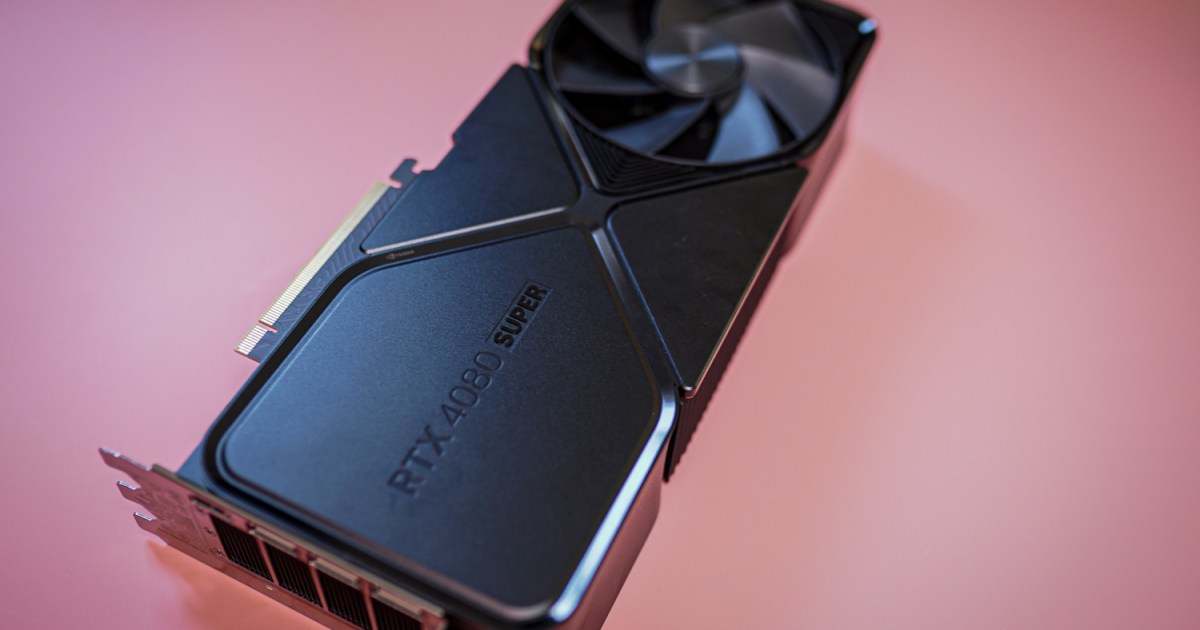Nvidia just scaled down DLSS 3, and that’s a good thing
The latest GeForce drivers come with a new version of DLSS 3, and it's a lot smaller than the previous release. That's not a bad thing.

Nvidia’s signature tech, DLSS 3, just got yet another update — and although it’s subtle, it actually seems like a good thing for some of the best graphics cards. The latest version, 3.8.10, bundled with the GeForce 566.14 driver, doesn’t seem to introduce any major changes, but Nvidia enthusiasts noticed that it’s about half the size that it used to be. Where’s that difference coming from?
No, Nvidia didn’t downgrade DLSS 3 — at least not in any major way. Although this hasn’t been confirmed by Nvidia itself, it appears that the company removed a whole bunch of DLSS presets and replaced them with just two. These presets make it easier for gamers to choose the type of focus they want to apply to each game.
Some profiles are centered around performance, meaning frames per second (fps), while others focus on high graphics quality. Not every game lets you pick between all the presets that Nvidia used to offer, but you’ll find that some game settings allow you to tweak DLSS and shift between Quality and Performance modes. Now, the choice should be simpler, although it’ll still vary depending on the game.
Prior to this update, Nvidia offered various DLSS 3 presets, from A through D. These profiles covered all sorts of different DLSS tweaks, ranging from profiles made to improve ghosting issues to presets made for fast-paced games. The latest driver removes all of those presets and instead comes with two that are in use and one that’s not currently in use.
 Jacob Roach / Digital Trends
Jacob Roach / Digital TrendsPreset E is, according to VideoCardz, the new default preset for Performance, Balanced, and Quality modes. It should provide greater image stability. Meanwhile, preset F is focused on ultra-high performance and deep learning anti-aliasing (DLAA) and should push for higher frame rates. Preset G is not currently in use.
Cutting out all of these different profiles made DLSS 3.8.10 take up less space. That, in itself, really doesn’t matter, but perhaps simplifying the profiles will make it easier for gamers and developers alike to optimize their game settings. You can use third-party tools to optimize your DLSS profiles in games outside of their intended settings, but be careful, because some titles may flag you for cheating when you use that kind of software.
Meanwhile, many are speculating about DLSS 4 and what that might entail, but chances are we won’t find out until Nvidia’s RTX 50-series arrives in January.
Monica is a computing writer at Digital Trends, focusing on PC hardware. Since joining the team in 2021, Monica has written…
25 years ago, Nvidia changed PCs forever
Twenty-five years ago, Nvidia released the GeForce 256 and changed the face of PCs forever. It wasn't the first graphics card produced by Nvidia -- it was actually the sixth -- but it was the first that really put gaming at the center of Nvidia's lineup with GeForce branding, and it's the device that Nvidia coined the term "GPU" with.
Nvidia is celebrating the anniversary of the release, and rightfully so. We've come an unbelievable way from the GeForce 256 up to the RTX 4090, but Nvidia's first GPU wasn't met with much enthusiasm. The original release, which lines up with today's date, was for the GeForce 256 SDR, or single data rate. Later in 1999, Nvidia followed up with the GeForce 256 DDR, or dual data rate.
Nvidia just dropped a big hint about the RTX 50-series release date
Speculation has been running rampant about Nvidia's launch of next-gen RTX 50-series GPUs, but the company itself just dropped a big hint about when they may show up. Nvidia CEO Jensen Huang is set to take the stage as the keynote speaker of CES 2025 on January 6, where there's a good chance we'll hear about Nvidia's next generation of graphics cards.
Although Nvidia is at the annual tech show each year, Huang -- who recently surpassed the worth of all of Intel -- hasn't made an appearance in five years. The executive will likely focus heavily on AI, as it has catapulted Nvidia to become one of the world's wealthiest companies. But RTX 50-series GPUs should make an appearance, too. Nvidia usually takes advantage of CES to launch new graphics cards.
These AMD and Nvidia release date updates are giving me whiplash
If you're wondering about the future of Nvidia's and AMD's top graphics cards, you're not alone. We all know it's almost time for the next generation of GPUs to be released, but no one knows when exactly that's going to happen. Today, another source weighed in with conflicting information regarding the release dates of the RTX 50 series and the RX 8000 series, and honestly, it's all starting to give me whiplash at this point.
At the beginning of 2024, most enthusiasts and leakers alike believed that all three GPU makers -- AMD, Intel, and Nvidia -- would launch their next-gen products before the end of the year. In fact, early leaks pointed to an end-of-summer release for AMD. As time went on, we've all tempered our expectations as it became clear that we're unlikely to see any new graphics cards before early 2025.

 ValVades
ValVades 





































